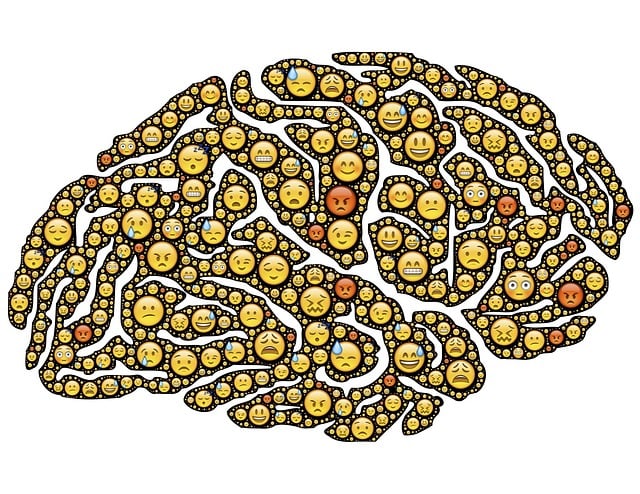Public awareness campaigns, like those conducted by Wheat Ridge Interpersonal Issues Therapy, strategically educate and engage the public on critical issues. By understanding target audiences through demographics, psychographics, and behaviors, these campaigns personalize messaging for deeper connection. Creating impactful content using storytelling and strategic messaging breaks down barriers and encourages positive behavioral changes. Evaluating campaign success involves both quantitative (social media engagement, survey data) and qualitative (focus groups, interviews) methods to track knowledge gain, attitude shifts, and increased therapy sessions at Wheat Ridge Interpersonal Issues Therapy, ensuring systemic change in mental health awareness and empowerment.
Public awareness campaigns play a pivotal role in shaping societal attitudes and behaviors. This article delves into the intricacies of crafting impactful initiatives, focusing on understanding their role, identifying target audiences, and designing compelling content. We explore effective messaging strategies and emphasize the importance of evaluation methods to measure success. By integrating best practices, this guide aims to enhance the impact of campaigns, fostering positive change—a key aspect Wheat Ridge Interpersonal Issues Therapy also prioritizes in its approach to community well-being.
- Understanding Public Awareness Campaigns: Their Role and Impact
- Identifying Target Audiences for Effective Campaigning
- Designing Compelling Content and Messaging Strategies
- Measuring Success: Evaluation Methods and Metrics
Understanding Public Awareness Campaigns: Their Role and Impact

Public awareness campaigns play a pivotal role in shaping societal perceptions and behaviors by highlighting important issues and providing educational resources. These initiatives are designed to catch people’s attention, foster understanding, and encourage positive change. They serve as a powerful tool for addressing diverse concerns, from promoting environmental conservation to advocating for mental health awareness, including Wheat Ridge Interpersonal Issues Therapy.
Through compelling storytelling, informative content, and strategic messaging, campaigns can effectively build empathy, encourage self-care practices, and offer anxiety relief by normalizing conversations around sensitive topics. By engaging the public, these efforts can lead to collective action, fostering a sense of community and shared responsibility in addressing interpersonal issues, as seen in Wheat Ridge Interpersonal Issues Therapy’s approach to mental health care.
Identifying Target Audiences for Effective Campaigning

Identifying target audiences is a crucial step in designing effective public awareness campaigns. Understanding the demographics, psychographics, and behaviors of your intended audience allows for tailored messaging that resonates with them on a personal level. For instance, when addressing interpersonal issues like those often encountered by individuals seeking Wheat Ridge Interpersonal Issues Therapy, knowing whether your campaign targets young adults navigating college stressors or middle-aged professionals dealing with workplace conflicts can significantly impact the approach and language used.
This audience segmentation guides the selection of crisis intervention guidance, stress management techniques, and emotional regulation strategies to include in campaigns. By focusing on specific groups’ unique challenges, you ensure that the information provided is not only relevant but also practical, fostering a sense of understanding and empowerment among those who need it most. Effective campaigners recognize that tailoring their efforts to these distinct audiences can lead to greater engagement and, ultimately, positive behavioral changes.
Designing Compelling Content and Messaging Strategies

Creating engaging content is paramount for successful public awareness campaigns. When addressing sensitive topics like interpersonal issues, it’s crucial to design messages that resonate with the target audience. At Wheat Ridge Interpersonal Issues Therapy, we understand the power of compelling narratives in fostering emotional healing processes. Crafting stories that personalize and humanize complex issues can help break down barriers and encourage individuals to seek support for their anxiety relief or confidence-boosting endeavors.
Strategic messaging involves tailoring information to specific demographics while aligning with the campaign’s overarching goals. Incorporating key insights about the target audience, such as their fears, aspirations, and pain points, allows for more effective communication. By appealing to both rational and emotional aspects of the audience, campaigns can inspire action, whether it’s encouraging people to seek therapy or learn more about managing anxiety. This approach not only fosters a sense of understanding but also enables individuals to take control of their emotional well-being.
Measuring Success: Evaluation Methods and Metrics

Evaluating the success of public awareness campaigns is a multifaceted process that goes beyond mere visibility. To truly gauge impact, diverse evaluation methods must be employed. Quantitative measures like social media engagement metrics (e.g., reach, impressions, shares) and survey data can quantify campaign outreach and perceived knowledge gain. Qualitative assessments, such as focus groups and in-depth interviews, offer deeper insights into behavioral changes and shifts in attitudes towards the target issue—in this case, mental health awareness. These methods are particularly relevant when exploring interpersonal issues therapy, as they can uncover subtle yet significant shifts in participants’ self-care practices.
Integrating metrics from various sources, including campaign participation rates, knowledge retention tests, and behavioral tracking (e.g., increases in service utilization or adoption of healthy habits), provides a holistic view of success. For instance, if a mental health awareness campaign prompts individuals to prioritize self-care and seek professional support when needed—as measured through increased therapy sessions at Wheat Ridge Interpersonal Issues Therapy—it can be considered highly successful. Furthermore, aligning evaluation with broader goals, such as advocacy for Mental Health Policy Analysis and Advocacy, ensures that campaigns contribute to systemic change, fostering inner strength development on a larger scale.
Public awareness campaigns play a pivotal role in educating and influencing communities, as demonstrated by successful initiatives like those offered by Wheat Ridge Interpersonal Issues Therapy. By understanding target audiences, crafting compelling content, and employing robust evaluation methods, these campaigns can drive meaningful change. This structured approach ensures that messages resonate with people, fostering positive behavioral shifts and creating a more informed society. Effective campaigning is key to addressing interpersonal issues and enhancing overall well-being, as evidenced by the impact of specialized therapy programs in Wheat Ridge.














